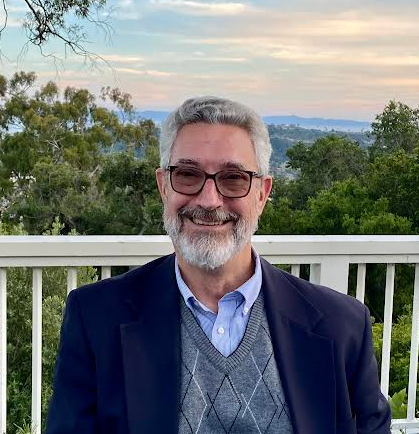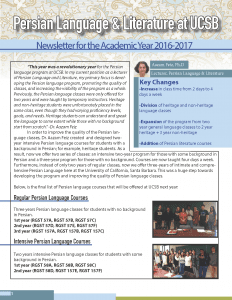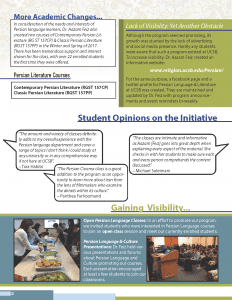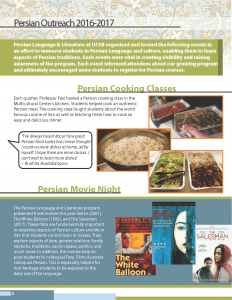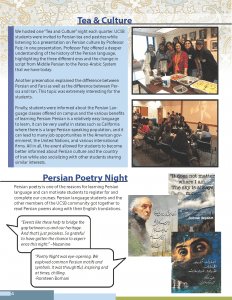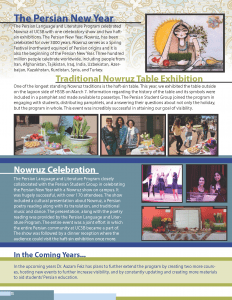Dwight Reynolds
About:
Dwight Reynolds is Distinguished Professor of Arabic Language & Literature in the Department of Religious Studies at the University of California in Santa Barbara and affiliate faculty member of the Department of Music, Department of Theater and Dance, the Program in Latin American and Iberian Studies, and the Comparative Literature Program.
Recent Books: The Musical Heritage of al-Andalus (Routledge/Taylor & Francis, 2021)
NOW AVAILABLE IN AN OPEN ACCESS EDITION:
https://www.routledge.com/The-Musical-Heritage-of-Al-Andalus/Reynolds/p/book/9780367653613
WINNER: PREMIO DEL REY BOOK PRIZE 2022
(American Historical Association)
WINNER: EARLY MUSIC BOOK PRIZE 2022
(American Musicological Society)
“. . . The twelve chapters of The Musical Heritage of al-Andalus track the pernicious politics of “influence”; interreligious and intercultural negotiations beyond the traditional, narrow tripartition of Muslims, Christians, and Jews; gender roles and sexual identities; the development of “revolutionary” Arabic and Hebrew lyric genres in Iberia; and the complex intertwining of social status, ethnicity, enslavement, and music professionalization (alongside much more). . . Reynolds makes accessible a rich body of work that may be unfamiliar to the wider readership that the book invites, and offers compelling new arguments for specialized readers. This magisterial monograph promises to invigorate new generations of scholars and scholarship on the music of al-Andalus.”

New Book: Medieval Arab Music and Musicians: Three Translated Texts (Brill 2022)
NOW AVAILABLE IN AN OPEN ACCESS EDITION:
https://brill.com/display/title/61295?language=en
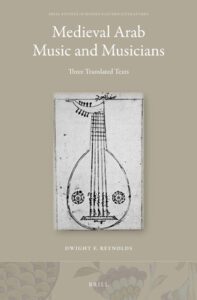
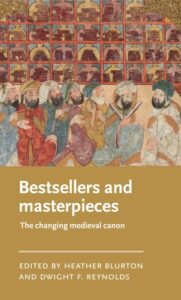
(Manchester University Press,2022):
Bestsellers and Masterpieces: The Changing Medieval Canon
https://manchesteruniversitypress.co.uk/9781526147486/bestsellers-and-masterpieces/
Book: Heroic Poets, Poetics Heroes: the Ethnography of Performance in an Arabic Oral Epic Tradition (Cornell University Press, 1995)
NOW AVAILABLE IN AN OPEN ACCESS EDITION:
https://d119vjm4apzmdm.cloudfront.net/open-access/pdfs/9781501723223.pdf
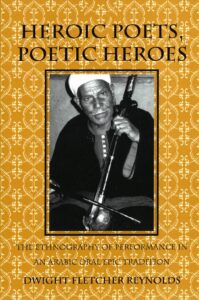
Publications:
- Medieval Arab Music and Musicians: Three Translated Texts Leiden: Brill, 2022.
- Bestsellers and Masterpieces: The Changing Medieval Canon, ed. with Heather Blurton. Manchester, UK: Manchester University Press, 2022.
- The Musical Heritage of al-Andalus. London: Routledge/Taylor & Francis, 2021.
- The Cambridge Companion to Modern Arab Culture. Editor and co-author. Cambridge: Cambridge University Press, 2015.
- Tarjamat al-nafs: al-sīra al-dhātiyya fī al-adab al-‘arabī. Trs. Sa‘īd al-Ghānimī. Abu Dhabi: Hay’at Abū Dhabī li-l-Thaqāfa wa-l-Turāth. 2009 [Arabic translation of Interpreting the Self: Autobiography in the Arabic Literary Tradition, UC Press 2001].
- Arab Folklore: A Handbook, Westport, CN: Greenwood Press, 2007.
- The Cambridge History of Arabic Literature: the Post-Classical Period. Section Editor (Part IV: Popular Prose) & Contributing Author. Cambridge: Cambridge University Press, 2002.
- The Garland Encyclopedia of World Music, Volume 6: The Middle East. Co-editor with Virginia Danielson and Scott Marcus. London: Routledge, 2002.
- Interpreting the Self: Autobiography in the Arabic Literary Tradition. Editor and co-author. Berkeley/Los Angeles: University of California Press, 2001.
- Heroic Poets, Poetic Heroes: The Ethnography of Performance in an Arabic Oral Epic Tradition. Ithaca: Cornell University Press, 1995.
Articles:
- Composition in Performance Arab Style.” In Singers and Tales in the Twenty-first Century. Eds. David F. Elmer and Peter McMurray. Cambridge, MA: Harvard University Press, 2024: 71-91.
- “The Musical Modes of al-Andalus.” Special Issue: Musical Sources and Theories from the Ancient Greeks to the Ottoman Period. Guest Eds. Yasemin Gökpinar and Stephanie Schewe. Oriens (2023): 155-76.
- “Middle Eastern Epics Across the Millennia.” In Teaching World Epics. Ed. Jo Ann Cavallo. New York: Modern Language Association, 2023: 314-24.
- Rhyme in Arabic Oral Poetry.” In Rhyme and Rhyming in Verbal Art and Song. Helsinki: Finnish Literary Society, 2022: 47-62. Open Access: https://doi.org/10.21435/sff.25.
- “… And of these things a dream was left behind called ‘Antar”: Arabic Performance Traditions of Heroic Poetry.” In Ariosto and the Arabs. Ed. Michael W. Wyatt. Rome: Officina Libraria, 2022: 381-99.
- “Music as Desire: Erotic Dimensions of Musical Imagery in the Muwashshaḥ.” In Les Mots du désirLa langue de l’érotisme arabe et sa traduction. Eds. Frederic Lagrange and Claire Savina Paris: Diacritiques Éditions, 2020: 106-26.
- “From Ṣawt to Muwashshaḥ.” In The Study of al-Andalus: The Scholarship and Legacy of James T. Monroe. Eds. Michelle Hamilton and David Wacks. Boston: Ilex Foundation: 35-52.
- “Abū Zayd al-Hilālī: Trickster, Womanizer, Warrior, Shaykh.” In Special Issue in Honor of Pierre Cachia, guest editor, Elizabeth Holt. Journal of Arabic Literature 49 (2018): 78-103.
- “Music, Poetry, and Lingua Franca in Medieval Iberia.” In Lingua Franca: Explorations of the Literary Geography of the Mediterranean World, ed. Michael Allan and Elisabetta Benigni. (Philological Encounters 2, 2017): 76-94.
- “Composition in Performance Arab Style.” Online: Issue 14 of Classics@: http://nrs.harvard.edu/urn-3:hlnc.essay:ReynoldsD.Composition_in_Performance_Arab_Style.2016
- “Song and Punishment.” In Arabic Humanities, Islamic Thought: a Festschrift for Everett K. Rowson. Eds. Shawkat Toorawa and Joseph Lowry. Leiden: E. J. Brill, 2017: 211-232.
- “Ziryab in the Aghlabid Court.” In The Aghlabids and their Neighbors: Art and Material Culture in 9th-century North Africa. Ed. Glaire D. Anderson, et al. Leiden: E. J. Brill Arts and Archaeology of the Islamic World series, 2017: 144-162.
- “The Qiyan of al-Andalus.” In Concubines and Courtesans: Women and Slavery in Islamic History Eds. Matthew S. Gordon and Kathryn Hain. Oxford: Oxford University Press, 2017: 100-123.
- “From Basmati Rice to the Bani Hilal: Digital Archives and Public Humanities.” In Digital Humanities and Islamic & Middle East Studies. Ed. Elias Muhanna. De Gruyter: 2016, pp. 251-268.
- “Jews, Muslims, Christians and the Formation of Andalusian Music.” In Musical Exodus: Al-Andalus and Its Jewish Diasporas. Ed. Ruth Davis. NY/London: Rowman & Littlefield, 2015: 1-24.
- “Andalusian Classical Music.” In The Other Classical Musics. Ed. Michael Church. London: Boydell and Brewer, 2015: 246-269.
- “Modern Arab Culture: Introductory Remarks.” In Cambridge Companion to Modern Arab Culture. Ed. Dwight F. Reynolds. Cambridge: Cambridge University Press, 2015: 1-18.
- “Folklore.” In Cambridge Companion to Modern Arab Culture. Ed. Dwight F. Reynolds. Cambridge: Cambridge University Press, 2015: 249-67.
- “The Sirat Bani Hilal Digital Archive.” Oral Tradition: Special Issue – Online
Resources for the Study of Oral Traditions, 28/2 (2013): 271-78. - “Lost Virgins Found: The Arabic Songbook Genre and an Early North African Exemplar.” Quaderni di Studi Arabi Special Issue: Words and Music. Eds. Hilary Kilpatrick and Giovanni Canova, N.S. 7 (2012): 69-105 .
- “Arab Musical Influence on Europe: A Reassessment.” In A Sea of Languages: Literature and Culture in the Pre-Modern Mediterranean. Eds. Suzanne Akbari and Karla Mallette. University of Toronto Press, 2013, pp. 182-98.
- “Composition in Performance Arab Style.” In Singers and Tales in the 21st Century: The Legacies of Milman Parry and Albert Lord. David Elmer, ed. Harvard University Press (forthcoming)
- “Epic and History in the Arabic Tradition.” In Epic and History. Eds. David Konstan and Kurt A. Raaflaub. Chichester, West Sussex: Wiley-Blackwell, 2010: 392-410.
- “New Directions in the Study of Medieval Andalusi Music.” Journal of Medieval Iberian Studies, Vol. 1, no. 1 (2009): 37-51.
- “Al-Maqqarī’s Ziryāb: The Making of a Myth.” Middle Eastern Literatures, Vol. 11, no. 2 (2008): 155-168. Special issue, ed. Shawkat Toorawa.
- “Musical Aspects of Ibn Sanā’ al-Mulk’s Dār al-Ṭirāz.” In Muwashshah: Proceedings of the Conference on Arabic and Hebrew Strophic Poetry and its Romance Parallels, October 8-10, 2004, School of Oriental and Asian Studies, University of London: 211-227.
- The Sirat Bani Hilal Digital Archive: https://siratbanihilal.ucsb.edu/
- The Cambridge History of Arabic Literature: the Post-Classical Period, Section Editor (Part IV: Popular Prose) & Contributing Author (pp. 245-69, 270-91, 307-18). Cambridge: Cambridge University Press, 2006.
- “Symbolic Narratives of Self: Dreams in Medieval Arabic Autobiography.” In Defining Fiction and Adab in Medieval Arabic Literature, ed. Philip Kennedy. Studies in Arabic Language and Literature, Harrassowitz Verlag, Volume 7: 259-284, 2005.
- “La Música Andalusí como Patrimonio Cultural Circum-Mediterráneo.” In El patrimonio cultural, multiculturalidad y gestión de la diversidad [Cultural Patrimony, Multiculturalism, and the Management of Diversity], 128-141. Eds. Gunther Dietz and Gema Carrera. Sevilla: Instituto Andaluz del Patrimonio Histórico, 2005.
- “Creating an Epic: From Apprenticeship to Publication,” in Textualization of Oral Epics, ed. Lauri Honko. Berlin/New York: Mouton de Gruyter. Pp.247-262, 2000.
- “Music,” in Cambridge History of Arabic Literature, The Literature of Al-Andalus. Cambridge: Cambridge University Press, pp. 60-82, 2000.
- “Musical ‘Membrances of Medieval Muslim Spain.'” In Charting Memory: Recalling Medieval Spain, ed. Stacy Beckwith. New York: Garland, pp. 155-168, 2000.
Courses Taught:
- RS 148A-C: Advanced Arabic
- CL 32: Middle Eastern Literatures in Translation
- RS 82: Modern Arab Culture
- Comp Lit/RS 147B: Culture of Medieval Muslim Spain
- RS 289A-C: Arabic Literary Readings








